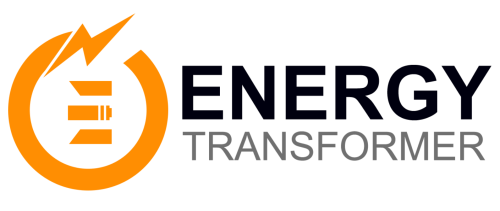The global demand for reliable energy is skyrocketing, driving a surge in the need for power transformers and energy transformers to support new infrastructure and upgrade aging grids. As companies worldwide look to source equipment from international markets, the process can seem complex. Importing transformers to North America, South America, or Europe requires careful consideration of many factors beyond just the purchase price.
This article provides a comprehensive guide to help you navigate the process, reduce risk, and ensure your investment is successful. By focusing on these key areas, you can make informed decisions and find the right partner for your project.
1. Compliance with Regional Standards
This is a non-negotiable first step. A transformer that doesn't meet local standards can't be legally installed or operated.
-
North America: In the United States and Canada, look for compliance with ANSI/IEEE and CSA standards. UL certification is a crucial safety mark that indicates the transformer has been tested and meets specific safety requirements.
-
Europe: The CE marking is mandatory for transformers sold in the European Economic Area (EEA), signifying conformity with health, safety, and environmental protection standards. IEC (International Electrotechnical Commission) standards are widely adopted, and compliance with RoHS (Restriction of Hazardous Substances) is essential.
-
South America: Many countries in South America follow IEC standards or have local adaptations. Always verify the specific requirements for your destination country.
2. Voltage and Frequency Requirements
The electrical grids of the world are not uniform. The most critical difference is the power frequency:
-
Americas: Most of North and South America operate on a 60 Hz frequency.
-
Europe: Most of Europe and much of the rest of the world use 50 Hz.
Using a transformer designed for a different frequency can cause significant operational issues and damage to the equipment and the connected grid. Always confirm that your transformer's design and nameplate data match the destination's electrical infrastructure.
3. Customs, Duties, and Import Regulations
Navigating customs can be one of the biggest hurdles. Proper documentation is key to a smooth process.
-
Documentation: Be prepared with an accurate HS code (Harmonized System code) for the transformer, certificates of origin, commercial invoices, and detailed packing lists.
-
Taxes and Tariffs: Research the specific tariffs and import taxes for your country. These costs can significantly impact the total project budget.
-
Working with Experts: A reputable exporter with experience in your region can provide invaluable support, helping you avoid delays and unexpected costs.
4. Logistics and Shipping Considerations
Transporting large, heavy equipment like a high-voltage transformer or a distribution transformer requires specialized logistics.
-
Size and Weight: The dimensions and weight of the transformer will determine the shipping method and cost. Sea freight is the most common and economical option for large units, while air freight is reserved for urgent or smaller transformers due to its higher cost.
-
Packaging: Proper packaging is essential to protect the transformer from damage during transit. This includes robust crating, shock absorbers, and moisture protection.
-
Transit Time: Plan for long lead times. International shipping can take weeks or even months, depending on the origin and destination.
Read More:2025 U.S. Power Transformer Market: A Breakdown of the Top 10 Manufacturers
5. Reliability, Quality, and Testing
Your transformer is a long-term investment. Don't compromise on quality.
-
Factory Testing: Insist on a comprehensive testing protocol. This includes routine tests on every unit and, where applicable, type tests and special tests to verify specific design characteristics.
-
Quality Indicators: Look for high-quality materials, robust workmanship, and adherence to international manufacturing standards.
-
FAT (Factory Acceptance Testing): If possible, participate in or send a representative to the Factory Acceptance Test. This is your opportunity to witness the transformer being tested to its specified parameters before it leaves the factory.
6. After-Sales Support and Spare Parts
A transformer's long service life means you'll need ongoing support.
-
Technical Support: Does the supplier offer remote or local technical support? Having access to experienced engineers for troubleshooting can save you time and money.
-
Documentation: Ensure you receive complete documentation, including operation manuals, technical drawings, and warranty information.
-
Spare Parts: Confirm the availability of critical spare parts and their typical lead times.
7. Sustainability and Environmental Compliance
Environmental regulations are becoming increasingly strict globally.
-
Environmental Standards: Be aware of regulations regarding oil handling, emissions, and recycling in your destination country.
-
Eco-friendly Design: Modern power transformers are often designed for greater energy efficiency and may use eco-friendly materials or monitoring systems to reduce environmental impact.
8. Supplier Reputation and Experience
Your choice of supplier is arguably the most important decision.
-
Global References: Choose a supplier with a proven track record of successful projects and a history of exporting to your specific region.
-
Partnership: Look for a partner who offers not just a product, but a long-term solution. A supplier who is transparent, responsive, and supportive throughout the entire process—from quotation to installation and beyond—will be invaluable.
Conclusion
Importing a power transformer is a complex process with many moving parts. By carefully considering compliance, logistics, quality, and supplier experience, you can mitigate risks and ensure a successful project. A reliable and experienced manufacturing partner can be the key to a smooth import process and a long-lasting, high-performing transformer.
Whether you're sourcing a substation transformer, a distribution transformer, or a specialized energy transformer, we have the expertise to help you.
Contact us today to discuss your project and receive a personalized quotation. Send your inquiry via email to info@evernewtransformer.com or use our online form to get started.

